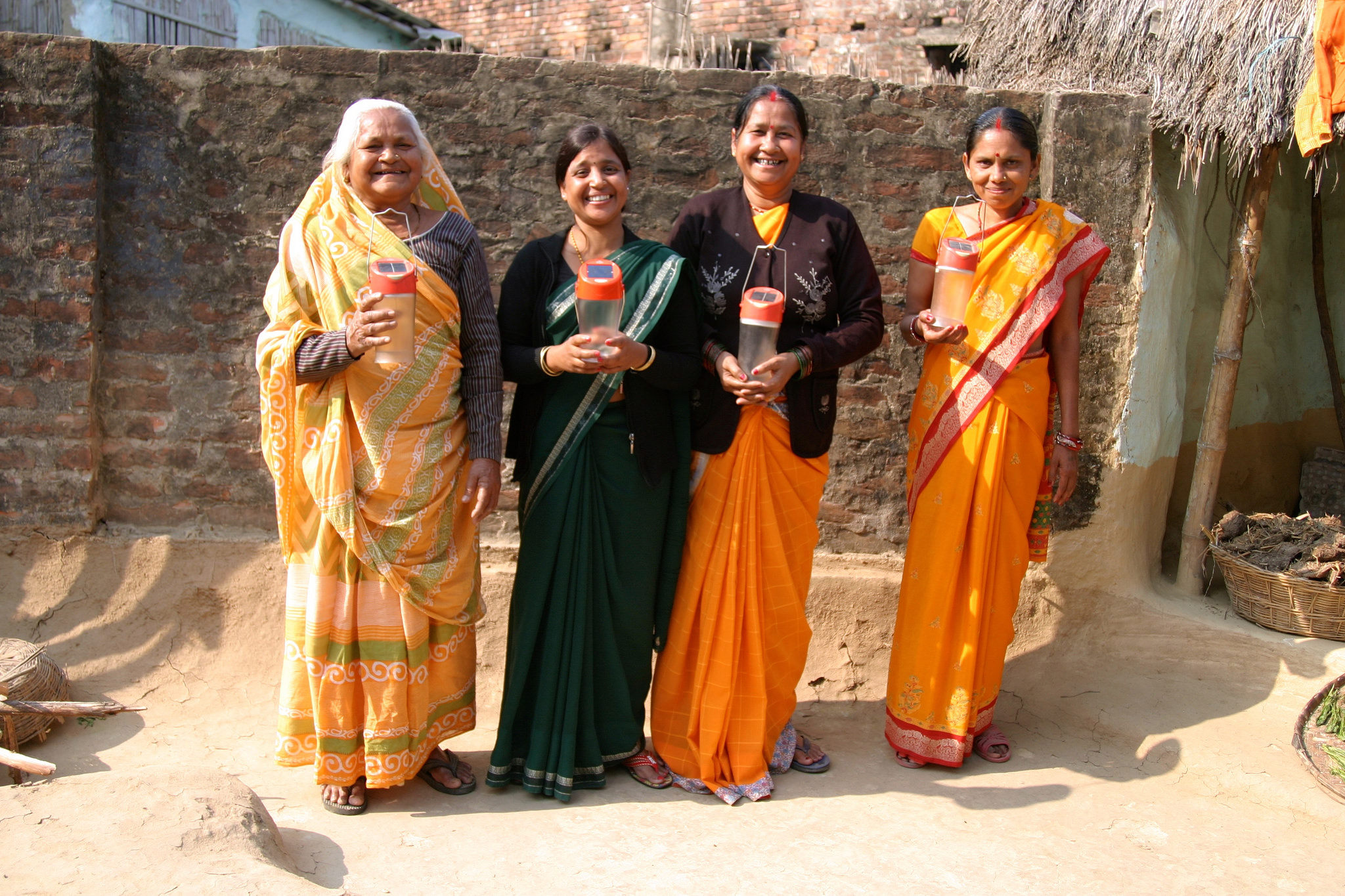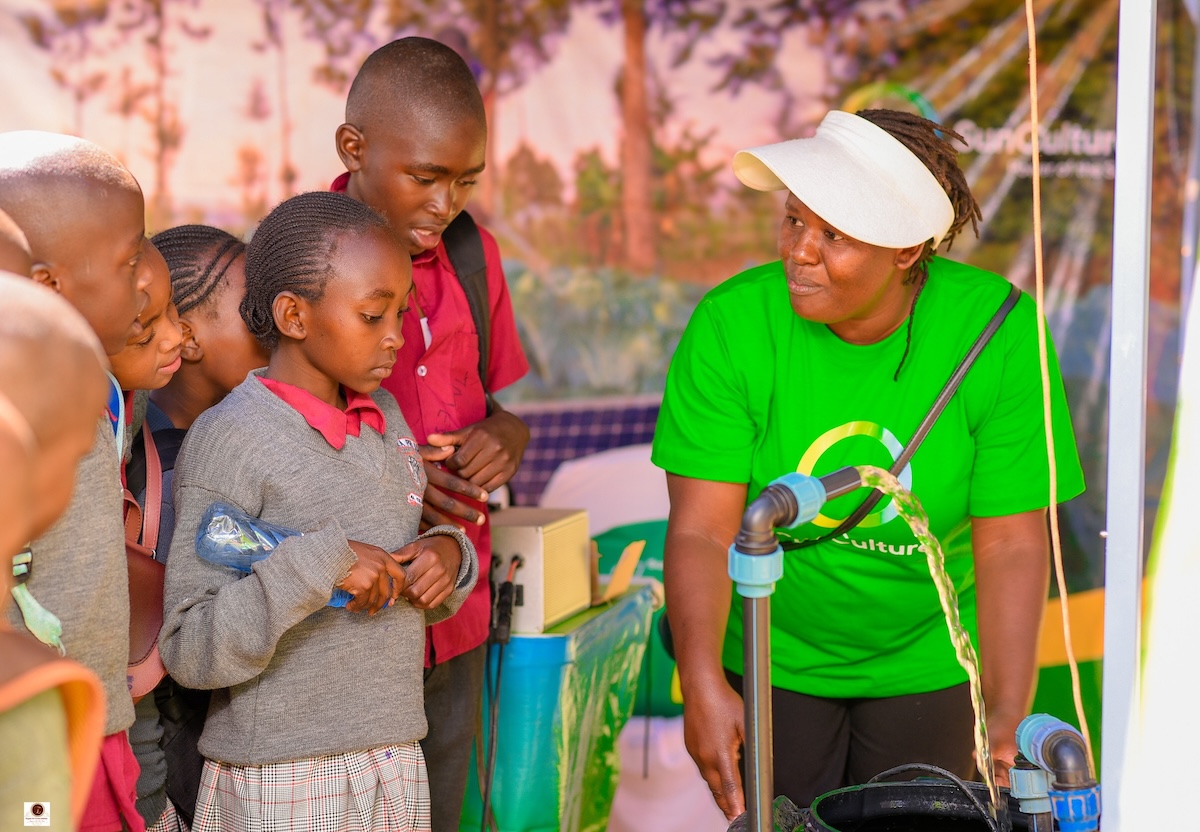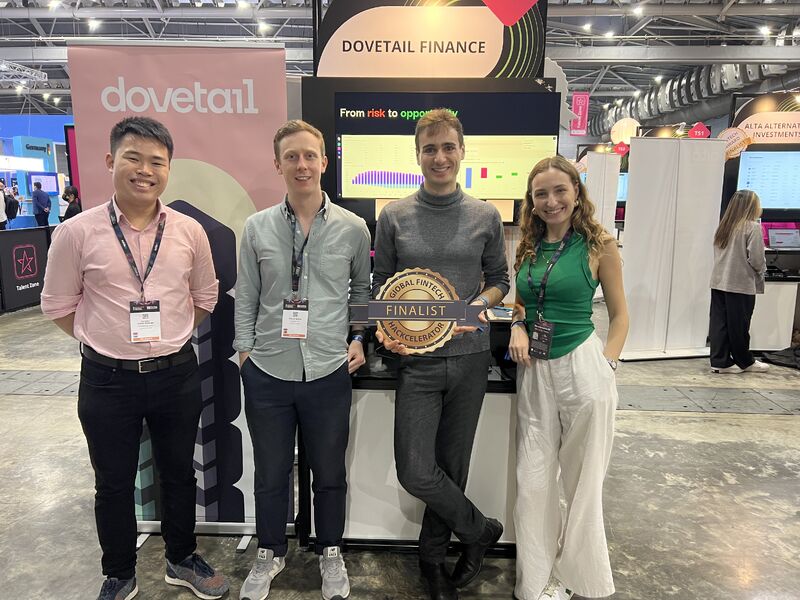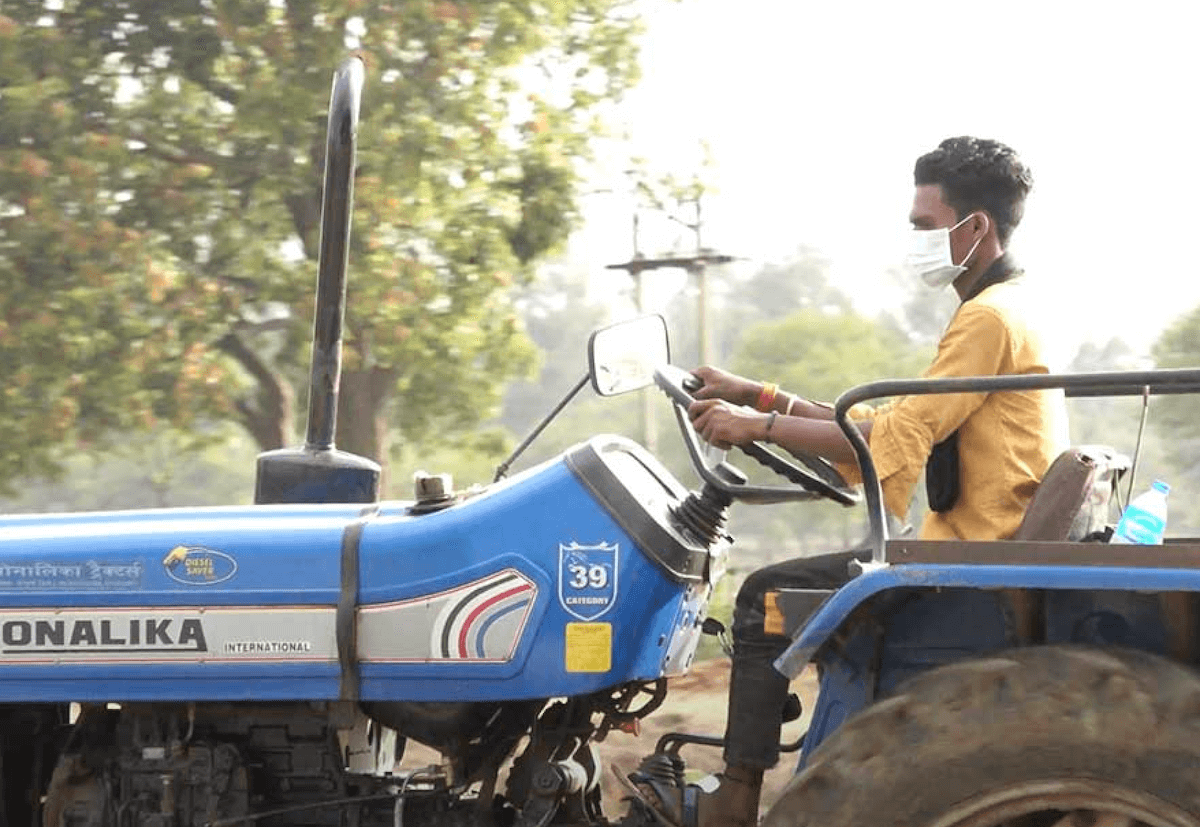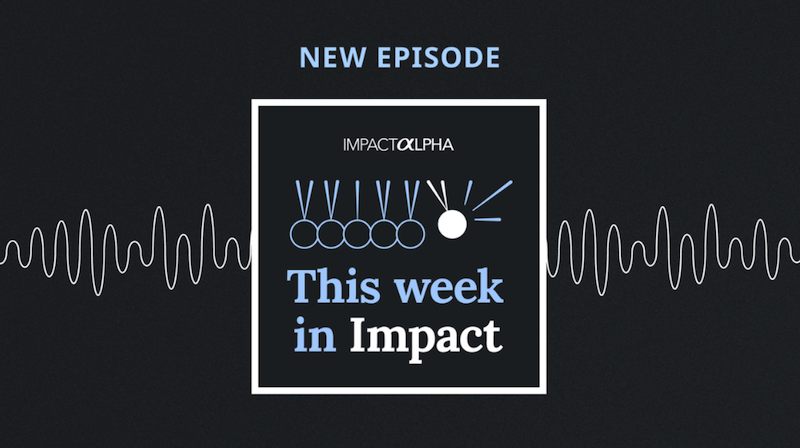How do we know if our efforts to make the world a better place are really working? What approaches are most effective for alleviating poverty, combating environmental degradation, or empowering women economically? Where can our investments have the most impact—and why?
To start to answer those questions, imagine a remote village in Africa, India, or Central America. It is entirely agrarian, lacks electricity, has no reliable source of clean water, no access to health care. Villagers must burn wood to cook food.
To improve lives in the village, an aid organization sends health workers to administer vaccines; provide checkups for pregnant women, new mothers, and children; and offer treatments for various ailments. A non-profit organization donates livestock and teaches farmers about which crops will do best in their fields. The local government opens and runs an elementary school.
A social entrepreneur from the region establishes a business that provides drinking water for the entire village. Another social enterprise enlists village women to distribute solar lanterns to their neighbors. Still another sets up a franchise of a successful clean cookstove business.
Several of these organizations also work at the systems level with local governing bodies to revise policies toward alternative energy distribution, steer funding toward community health and education initiatives, and encourage villagers’ participation on regional commissions.
Five years later, when you ask the villagers about their lives, most are better than before. Let’s even say you can now quantify the improvement in their overall well-being: a 40 percent increase.
Investors, grantors, entrepreneurs, policymakers and the villagers themselves may want to know, What were the contributions of any one of the organizations or social enterprises serving this village to that 40 percent rise in well-being? How much of the increase was due to ready access to potable water. How much to nighttime light? Access to education?
What’s the relative contribution of vaccines against tropical diseases? Of increased crop yields? The ability to cook without breathing toxic smoke or cutting down local forests?
And did systems-level policy or funding decisions make it possible to scale up and sustain these changes that contributed to the overall improvement in the villagers’ quality of life? How?
Ecosystem Approach
Social impact assessment faces a fundamental disconnect: Impact itself is the sum of myriad factors that combine to affect people’s lives. Yet impact assessment generally captures single issue-specific “interventions” or investments by individual organizations and institutions.
To track the effectiveness of their programs or investments, organizations try to determine their contributions to total impact. But with no single, simple solution to enable a village to build resiliency to climate change, or to escape poverty, the means of assessing progress must account for complexity.
Rather than dissecting each actor’s efforts, we need to understand how many different actors combined to impact customers and communities. Santa Clara University’s Miller Center for Social Entrepreneurship facilitates collaboration among social enterprises in its programs. Social entrepreneurs report that this peer-to-peer support is extremely valuable. Drawing on its 20 years as a pioneering accelerator for social enterprises, Miller Center is encouraging a shift in thinking about the assessment of social impact.
This shift entails the social entrepreneurs and the organizations that support them—Miller Center included—becoming more “intrapreneurial.” The hope is that will shift the entire acceleration ecosystem to achieve social enterprise synergies on a grander scale.
Assessing the impact of any social or environmental investment means facing a basic fact of ecology: Everything is related to everything else, in an interconnected web. Solutions to global issues such as poverty or gender inequality can differ drastically depending on geography, climate, culture, and other contexts. Rather than focusing on any one node, we must look at connections and a high-level view of the ecosystem. What combination of investments will add up to sustainable well-being?
Individual Enterprises
Many social entrepreneurs build businesses that start out focusing on a specific problem or opportunity within a particular population. Eventually, some discover the need, and the means, to expand their piece into a bigger solution.
Consider a social enterprise founded by advocates for climate justice and affordable clean energy. The founders design solar products they sell to generate revenues and sustain the business. When they begin selling their solar panels in remote villages, they realize they could achieve an even more transformative impact by diversifying and expanding the scope of their business.
They begin using their solar panels to operate schools and computers in the schools, filling a much-needed gap in rural education. They also use solar panels to help farmers pump water to irrigate their crops. Solar panels enable village women to use sewing machines to make clothes for their families and to sell extra clothing to generate family income.
This example shows how even a social enterprise that begins with a specific solution can find more opportunities to grow its business and impact through diversification of its offerings. And when social enterprises take on multiple issues, they often don’t need to spend esources trying to tease out the impact of any particular investment or intervention.
Most social entrepreneurs recognize that the whole is greater than the sum of its parts. But not all have business models or resources to take on the risk of diversifying to address multiple issues. How, then, can we help single-issue enterprises find synergy for collective impact?
Collective Value
Communities and customers, sometimes known as beneficiaries, care most about meaningful opportunities to improve their lives, regardless of who is involved. Development actors, on the other hand, including governments, NGOs, social enterprises and impact investors, each have a stake in and perspective on impact, and who gets the credit.
The trick in assessment, then, is to understand how beneficiaries experience the combined efforts of all of the actors. And next, to understand how actors see each other and the opportunities to collaborate.
Traditional evaluation and assessment approaches tend to focus on a specific set of beneficiaries, in a specific time period and place, related to a particular intervention. Traditional approaches aim to demonstrate if and how impact occurred.
In the social enterprise community, two newer approaches supplementing traditional ones are gaining traction. The first is the lean data model, as promoted by Acumen; the second is collective impact, as most recently advanced by FSG.
Lean data goes straight to the ultimate beneficiaries of one or more interventions. A lean data survey asks a small number of succinct questions to assess one aspect of progress toward a high-level goal. Lean data approaches tend to capture the big picture of impact as experienced by beneficiaries, even if it doesn’t provide a deep understanding of how impact occurred or what factors made it possible.
The survey might, for example, ask about well-being, but without fully digging into all the factors driving well-being.Still, the lean data approach provides a relatively resource-efficient and accurate understanding of the reality on the ground and the impact on the lives of people served by various interventions. This type of data becomes even more powerful when combined with commonly used indices of well-being such as Progress out of Poverty and the Social Progress Index.
Collective impact evaluation, in contrast, assesses the connections among actors that are necessary to achieve impact, teasing out the interdependencies, areas of overlap, and potential gaps in effectiveness. Collective impact evaluation adds a layer of understanding to complement lean data and further supplement traditional evaluation.
In addition to highlighting the connections between actors, measuring collective impact is also important for avoiding unintended consequences and opportunity costs of well-intended but narrow and not well-integrated efforts.
Many of the bigger questions of impact assessment can be answered by integrating approaches. Returning to our remote village: the aid organization focusing on health might be using traditional evaluation methods to examine its impact. The non-profit and social entrepreneur might be using lean methods to examine how their efforts in agriculture, water, and energy promote well-being.
Can the government focused — focused on beneficiaries such as children—act as a backbone to coordinate data sharing and collaboration among all these actors? Can funders and investors adopt a portfolio approach to evaluating collective impact?
Next Steps
Miller Center for Social Entrepreneurship is one of the premier accelerators for social enterprises. Over the past 20 years, we have seen first-hand the interdependence of the social enterprises we work with, and their linkage with all the other development actors operating in similar places and projects.
While we don’t pretend to have all the answers, we are making an effort to ask the right questions. These include:
- How can we identify opportunities for more effective relationships among development partners?
- What kinds of training and investment vehicles are needed to support this shift toward collective impact?
- How do we enable everyone to share data?
- How can social enterprise accelerators best work together —especially in supporting the same social enterprises?
Tackling global issues such as poverty and environmental degradation is important, difficult work. The more we can operate from an understanding of the interdependence of the problems and solutions for the ultimate beneficiaries, the better for all of us.
[seperator style=”style1″]Disclosure[/seperator]
Photo credit: Empower Generation
Empower Generation trains women in Nepal to sell solar power lanterns in the local villages. Founder Anya Cherneff, who went through the Miller Center’s Global Social Benefit Institute Fellowship 2015, started by working with human trafficking victims. She realized it was only through economic empowerment that could she break the cycle of poverty by training women to become “Solar CEOs.”

